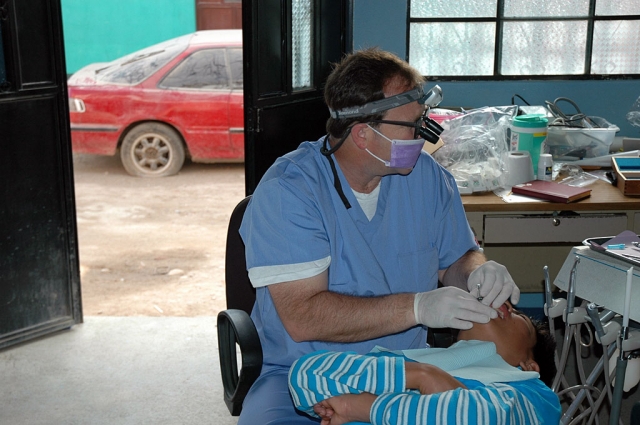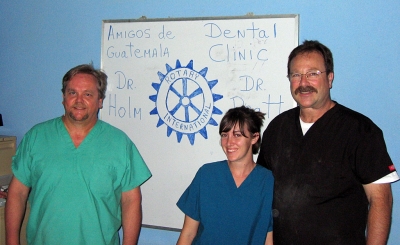|
By Anonymous — Wednesday, June 18th, 2008
In order to make some sense out of City of Fillmore salaries for top and mid-management employees, the Gazette has provided a schedule of 8 federal legislative, executive and judicial positions, and salaries for all 50 state governors, together with the complete wage scale for all top and mid-management positions in the City of Fillmore. Discretion is suggested when making comparisons; remember, a few positions require graduate credentials, and that certain mid-level employees are especially valued for their dedication, experience, leadership, and competence. One size does not fit all. May 15, 2007 |
|
Enlarge Video By Anonymous — Friday, June 13th, 2008
|
|
By Anonymous — Wednesday, June 11th, 2008
Hackney Stationed at Elmendorf Air Force Base, Alaska
Airman First Class (AIC) Ryan Hackney, 20 years old, a life-long Fillmore resident is a 2005 graduate of Cornerstone Christian School in Camarillo. Ryan also attended the Fillmore Christian Academy through the 6th grade. Ryan played in the Fillmore Little League Baseball and AYSO soccer. He also four years of soccer, as well of one year of basketball and one year of baseball for Cornerstone Christian School and In soccer he was voted MVP his junior and senior years. Ryan excelled as an athlete and a scholar in school. In the 8th grade he won several local, District and State spelling bees and then represented Southern California in the Association of Christian Schools International (ACSI) National Spelling Bee in Washington, D.C. AIC Ryan Hackney enlisted in the Air Force on August 22, 2006 and he is stationed at Elmendorf Air Force Base, Alaska. AIC Ryan Hackney is the son of Chuck and Tracy (Carpenter) Hackney of Fillmore. He has one sister Elyse Hackney, 17 years old, and a senior at Ventura County Christian High School. His Maternal Grandparents are Fred Carpenter of Fillmore and Evelyn Carpenter of Camarillo. His Paternal Grandparents are Dick Hackney and the late JoAnn Hackney of Fillmore. Ryan follows a long line of family members who have served in the military, his Grandfather Dick Hackney served in the Army and his Great-grandfather Paul Hackney, served in the Navy during WWI. Also serving was his Great-grandfather Fred Carpenter (Sr.) who served in General George S. Patton Jr.’s Third Army during WWII (1944-1945). Ryan’s Great-uncle, Larry Carpenter, served as the Sheriff for Ventura County from 1993-1998. AIC Ryan Hackney has served a six-month deployment to the Middle East in 2007. In the Middle East he served with the 379th Air Expeditionary Wing at Camp As Sayliyah, Qatar located on the outskirts of the capital city, Doha, Qatar. The 379th Air Expeditionary Wing is one of the largest, most diverse expeditionary wings in the Air Force, providing combat airpower and support for the Global War on Terrorism in Operations Iraqi Freedom, Enduring Freedom and through support of the Joint Task Force Horn of Africa. The wing and its associate units operate more than 100 aircraft, making the base a large hub for humanitarian airlift activity while providing mission-essential combat power, aeromedical evacuation and intelligence support for three theaters of operations. AIC Ryan Hackney has been awarded an Expeditionary Medal for "outstanding service” in support of Operations Iraqi Freedom, Enduring Freedom, the Combined Joint Task Force Horn of Africa and the National Defense Medal. He has earned Expert Marksman ribbons in both the M-4 and M-9 weaponry. He also has earned a ribbon for being an Honor Graduate at Lackland Air Force Base in Texas where he completed his basic training. Lackland is home to the 737th Training Group which provides Air Force Basic Military Training (BMT) for all enlisted people entering the Air Force, Air Force Reserve and Air National Guard, earning Lackland the nickname, "Gateway to the Air Force." In Alaska, AIC Ryan Hackney is with the 3rd Security Forces Squadron at Elmendorf Air Force Base, Anchorage, Alaska. When I asked Ryan what he does he told me, “I perform functions as both a law enforcement officer such as the normal speeding tickets, and other traffic stops, to responding to robberies, we are first responders to emergencies, domestic situations, suicides and basically any other law enforcement related responsibilities a civilian law enforcement officer would do. Along with that we perform security functions protecting Priority level 2 and 3 resources to include a Intelligence Squadron several AWACS airplanes, Alert cell F-22’s that are armed and manned at all times, and a quite extensive flight line.” Being familiar with law enforcement I believe AIC Ryan Hackney’s job in the Air Force is very important and one I believe he does well and will continue to do well. Elmendorf's host unit is the 3rd Wing. As the largest and principal unit within 11th Air Force, the 3rd Wing trains and equips an Air Expeditionary Force lead wing comprised of more than 6,600 Airmen and F-15C/D, E-3B, C-17, F-22A and C-12 aircraft. It provides air supremacy, surveillance, worldwide airlift, and agile combat support forces to project global power and global reach. The 3rd Wing also maintains the installation for critical force staging and throughput operations in support of worldwide contingencies and provides medical care for all forces in Alaska. The 3rd Mission Support Squadron executes mission support for the 3rd Wing and 36 associate units assigned to Elmendorf AFB—the largest military installation in 11th Air Force and is responsible for Civil Engineering, Services, Mission Support, Security Forces, Communications, Logistics Readiness, Contracting, and Non-Commission Officer Professional Military Education. Maintains combat and contingency readiness forces and supports two forward operating bases. All of us here in Fillmore and Piru wish AIC Ryan Hackney safe travel, a great career and we thank him and his family for his service and for their sacrifices while he is protecting all of our freedoms. |
 On Tuesday June 10, Fillmore Police Cheif Tim Hagel spoke to students at Fillmore Community High School. Chief Hagel’s charismatic and down-to-earth friendly approach with students was obvious as many students approached him after he fi nished speaking. Enlarge Photo By Norma Sandford — Wednesday, June 11th, 2008
What a wonderfully exciting time of year at Fillmore High School at Fillmore Community High School. |
|
By Anonymous — Wednesday, June 11th, 2008
At last night’s city council meeting it was determined by City Attorney Ted Schneider that the following city staff salary figures are permitted for public disclosure. Following are the present and proposed salaries for Fillmore’s eight top and mid-management city staff. These figures reflect base salary and total benefits packages. Salary reviews are built into the draft budget, occurring at a 3-year cycle at management and classified level, according to Mayor Steve Conaway, with the following going into effect on July 1, 2008. They will be made final, according to Conaway, in August or September. |
 At 3:25 p.m., Tuesday, a Suzuki motorcycle struck a three-quarter ton Dodge pickup on Highway 126 at Cavin Road. According to one witness, the motorcycle was traveling at a high rate of speed, eastbound, before striking the truck. The driver of the truck was attempting a left turn, heading westward. The motorcycle driver was thrown from his bike and the bike traveled for a considerable distance after the collision. The biker was airlifted from the scene with undisclosed injuries. Enlarge Photo By Anonymous — Wednesday, June 11th, 2008
|
|
By Dick Diaz — Wednesday, June 4th, 2008
2002 Fillmore High School Graduate, Now Stationed at Aviano, Italy
This article began with an email from the older brother of Pedro Rivera-Aparicio, Roque Rivera. Roque asked me if it was possible for me to do an article about his brother, without his brother being contacted for the information I needed. His request was because he wanted to surprise his brother with the article. Roque told me that Pedro would be proud that his community would want to honor him with an article about his service in the United States Air Force. Although unusual I thought it was a worthy cause and enlisted Rogue as my assistant in gathering the necessary information. Now that the article has been written and I have gotten to know Pedro, through Roque, I am thankful that I was allowed to participate in Roque’s surprise for his brother Pedro! |
|
By Wanda Castel de Oro — Wednesday, June 4th, 2008
An editorial by Wanda Castel de Oro
Remember the old tv show “Who’s the Boss?” That’s what I’ve been wondering lately while observing the last two meetings at the Fillmore Senior Center. |
|
By Joyce Schifanelli — Wednesday, June 4th, 2008
Part Two
Dr. Mark Pratt, a local dentist and his daughter Kristyn, a Cal State Northridge student of speech pathology, recently returned from a humanitarian adventure. They traveled to the tiny, northern mountain village of Zacualpa, Guatemala, administering urgently needed dental care for its inhabitants and those of the remote Mayan village of Turbala. Father and daughter participated in a two-week hands-on-project coordinated by Amigos de Guatemala, a partnership created by Rotary Clubs International to provide quality international service projects in the Quiche district of the impoverished country. Dr. Pratt and his daughter report treating as many as fifteen patients a day per dentist, performing simple and surgical extractions, fillings, root canals and cleanings. Every child required major dental work and most visitors to the clinic, child or adult, were in varying degrees of pain. None had ever been seen by a professional dentist. Untrained practices and home remedies, administered without antibiotics or anesthesia are a normal course of treatment. Donated dental services exceeded over $40,000 in value. The climate is warm and damp. Southwestern lowlands border the Pacific Ocean, while Belize and the Caribbean Sea create the country’s northeastern boundary. Most of the topography is hilly or mountainous, interspersed with high valleys, grassy plains and forests. Timber, chrome, silver, gold, copper, iron and lead are natural resources. Nevertheless, agriculture is the primary industry with the raising, processing and exporting of crops including, sugarcane, coffee, bananas, cocoa, beans and rice, cotton, essential oils (citronella and lemon grass), and lumber. Hand crafted pottery is locally made and sold to tourists in village marketplaces. Guatemala appears to be a tropical paradise. However, the people who call this enchanting landscape home have often suffered violence, isolation, sickness, natural disasters and crushing poverty throughout their history. The first human settlers arrived in the area from the north, more than 10,000,000 years ago. Those original tribes cultivated maize around 3500 BC. Centuries later, another populace, the Mayans, one of the most advanced and studied ancient civilizations, succumbed to a horrific drought around 900AD. European explorers arrived in the early 15th century bringing epidemics that nearly devastated the native Quiche populations. Two hundred years later, Spanish Conquistadors overran Guatemala. Though not as abundant in gold and silver as Mexico and Peru, during these centuries, plunderers stripped the territory’s natural wealth of sugarcane, blue dyes, cocoa and magnificent precious woods, shipping them to Spain to enrich kings and queens, palaces, churches, the aristocracy and themselves. In 1821, Guatemala won its independence from Spain and was incorporated into the Mexican empire, eventually separating to become an independent country of revolts and revolutions. During the 1870’s coffee became an important crop. The United States wielded considerable influence on the struggling country during the Cold War years with the USSR (1950-1990), supporting the Guatemalan Army with training, weaponry and funds. The CIA played a significant roll in overthrowing a freely elected president in a 1954 coup d’etat. In 1961, the Guatemalan government provided airfields to the United States during the Bay of Pigs invasion, and authorized military training for 5,000 anti-Castro Cubans. Guatemala’s modern history has been fraught with guerilla groups, rightwing paramilitary organizations, death squads, torture, revolts, civil wars, overthrown governments, disappearances, scorched earth policies and government sponsored genocide against indigenous populations in addition to loss of life from severe earthquakes, massive flooding and mudslides from hurricanes and four active volcanoes. As recently as 1982, 45,000 Guatemalans fled to Mexico to live in camps. The year 1996 brought peace accords ending decades of civil war. Successful democratic presidential elections followed. Free trade agreements have been implemented with other Central American countries and Mexico. Nevertheless, the country ranks amongst the highest in the world in murder rates and lowest in convictions. Despite moving into modern times, Guatemala City (the capitol), population 2,000,000, is nearly the only place where professional medical and dental attention is readily available. An additional 5,000,000 people live within the urban area. Distance and poverty prevent the balance of the population from receiving services. The average farm-worker earns $1 per day, leaving more than 56% living below poverty levels, primarily in the highlands and mountainous regions. The government sponsors public elementary and secondary schools; however, students’ parents are responsible for uniforms, books and supplies. If their parents can spare the expense, poverty-stricken rural children often walk hours to reach local schools. In addition to public schools, private, paying schools are available to middle and upper class children primarily in urban areas. Sixty-nine percent of the population over fifteen years of age is illiterate, the lowest rate in Central America. In spite of cultural and language barriers, the inhabitants of Zacualpa, mainly Indian, and the Mayans of Turbala tried their best to accommodate the volunteers. Most volunteers roomed in the church convent in Zacualpa and the church-school children performed their native dance in a welcoming presentation. Several villagers volunteered their help and time, and some acted as translators. Although offered, none took money! The days flew by in a flurry of rewarding work, especially when the team saw the grateful smiles upon the faces of people with so little. Recognizing the tremendous needs of these forgotten people, Dr. Pratt plans to return next year with Amigos de Guatemala and minister to the poorest of the remote Mayan communities. He says that although the trip is difficult, the work hours long, the living and working conditions very poor, along with the strong possibility of getting sick from the food, Guatemala and its people have left an imprint that tugs upon his heart every day. Kristyn feels the same, and hopes she can accompany him again. |










